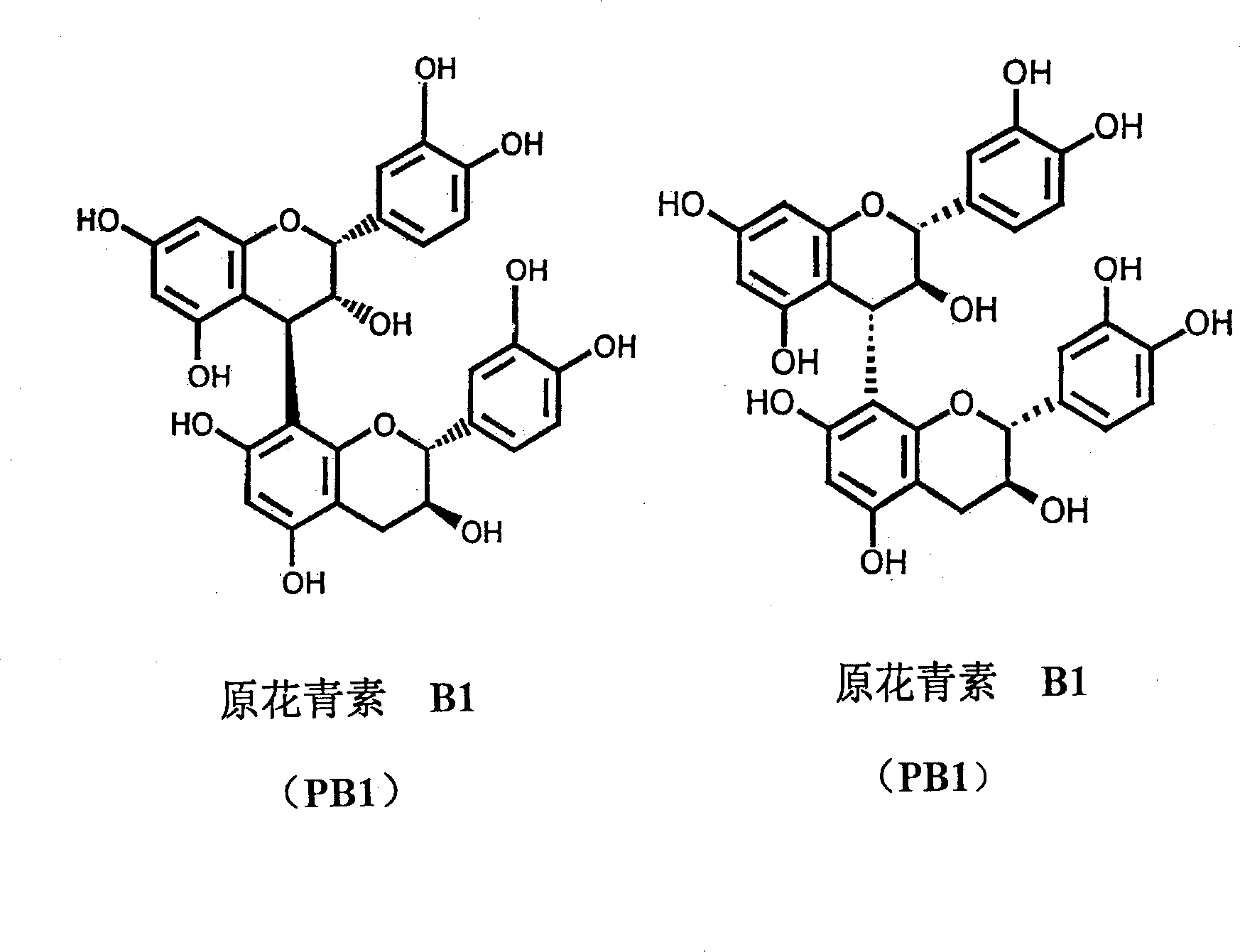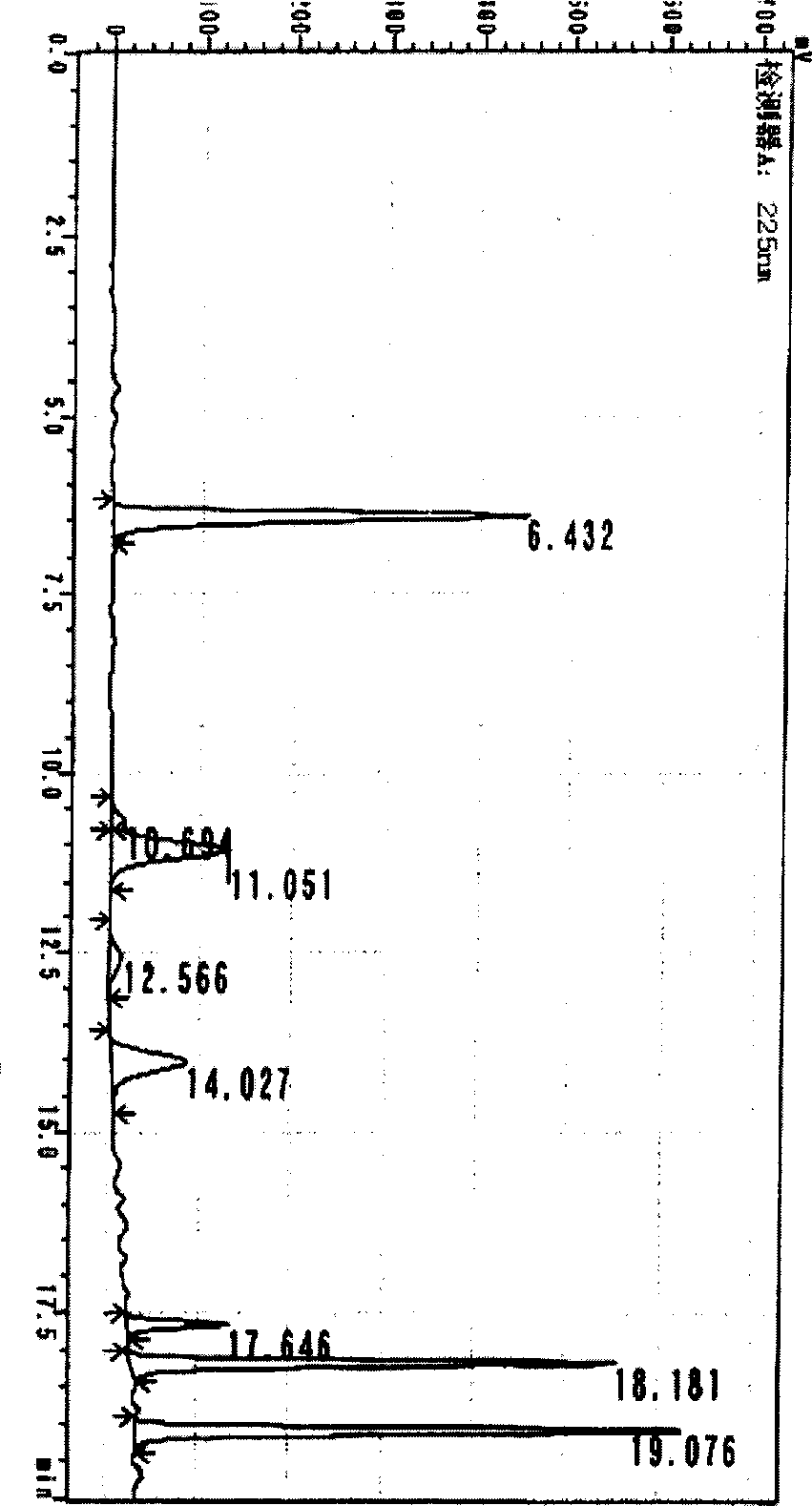Method for procyanidin analysis
A technology for proanthocyanidins and catechins, which can be used in analytical materials, biological material analysis, material separation, etc., and can solve the problems of impossible removal by quantitative analysis, limited compounds, and difficult quantitative methods.
- Summary
- Abstract
- Description
- Claims
- Application Information
AI Technical Summary
Problems solved by technology
Method used
Image
Examples
Embodiment 1
[0037] [Example 1] Discussion of pretreatment conditions
[0038] 5 ml of an aqueous solution containing 20 ppm each of proanthocyanidin B1 (PB1) and caffeine was loaded on a chromatographic column swelled with water to make Sephadex LH-20 (Amersham Biosciences, Inc., Japan) with a dry weight of 0.25 g, and washed with 2 ml of water , eluted with 2 ml each of 20%, 40%, 60%, and 80% EtOH. After each eluted fraction was concentrated under reduced pressure concentration, it was packed in a 2ml volumetric flask, and each eluted fraction was used for HPLC analysis (analysis conditions were recorded in Example 3) to quantify caffeine and PB1.
[0039] extract
[0040] From the results, it can be seen that caffeine is almost absorbed by water (H 2 O) elution, and PB1 is eluted by equal to or greater than 60% EtOH, and the two can be separated.
Embodiment 2
[0041] [Embodiment 2] Sephadex LH-20 pretreatment of tea products
[0042] 5 ml of tea products containing Flavangenol (proanthocyanidins derived from pine bark) were loaded on a chromatographic column swelled with Sephadex LH-20 (Amersham Biosciences Co., Ltd., Japan) with a dry weight of 0.25 g with water, washed with 2 ml of water, Elute with 35% EtOH 2ml, 70% EtOH 4ml. After the 70% EtOH eluted fractions were concentrated under reduced pressure, they were packed into a 2ml volumetric flask, and each eluted fraction was analyzed by HPLC (the analysis conditions were described in Example 3) to quantify caffeine and PB1. Concentrations were converted to those corresponding to the original volume (5 ml).
[0043] extract
caffeine concentration
PB1 concentration
h 2 O non-adsorbed
h 2 o wash
35%EtOH
70%EtOH
100ppm
9ppm
0.2ppm
0ppm
0ppm
0ppm
0.08ppm
2.7ppm
[0044] Wash with water to almost...
Embodiment 3
[0046] [Example 3] Separation of proanthocyanidins and flavan-3-alcohols with HPLC
[0047] Under the following conditions, HPLC was used to analyze the water, 35% or 70% EtOH elution fraction, and the sample solution after pretreatment to remove impurities such as caffeine, which were separated in the Sephadex LH-20 treatment.
[0048] The analysis conditions are that the chromatographic column adopts Capcellpak C-18 AQ (6mm×150mm, Japan Shiseido Co., Ltd.), the A solution is 0.05% TFA / water, and the B solution is 0.05% TFA / 90% CH 3 CN / water, flow rate 1.2ml / min, carry out gradient elution of B10%→B10% (10 minutes) B10%→B35% (10 minutes). The column temperature is 40°C, and the area value of A225nm is used for quantification. HPLC uses Shimadzu LC-2010HT (Shimadzu Corporation, Japan).
[0049] Under this condition, proanthocyanidin B1 scored 10.7 points, proanthocyanidin B3 scored 12.6 points, catechin scored 14.0 points, epicatechin scored 17.6 points, gallocatechin scored...
PUM
 Login to View More
Login to View More Abstract
Description
Claims
Application Information
 Login to View More
Login to View More - R&D
- Intellectual Property
- Life Sciences
- Materials
- Tech Scout
- Unparalleled Data Quality
- Higher Quality Content
- 60% Fewer Hallucinations
Browse by: Latest US Patents, China's latest patents, Technical Efficacy Thesaurus, Application Domain, Technology Topic, Popular Technical Reports.
© 2025 PatSnap. All rights reserved.Legal|Privacy policy|Modern Slavery Act Transparency Statement|Sitemap|About US| Contact US: help@patsnap.com


